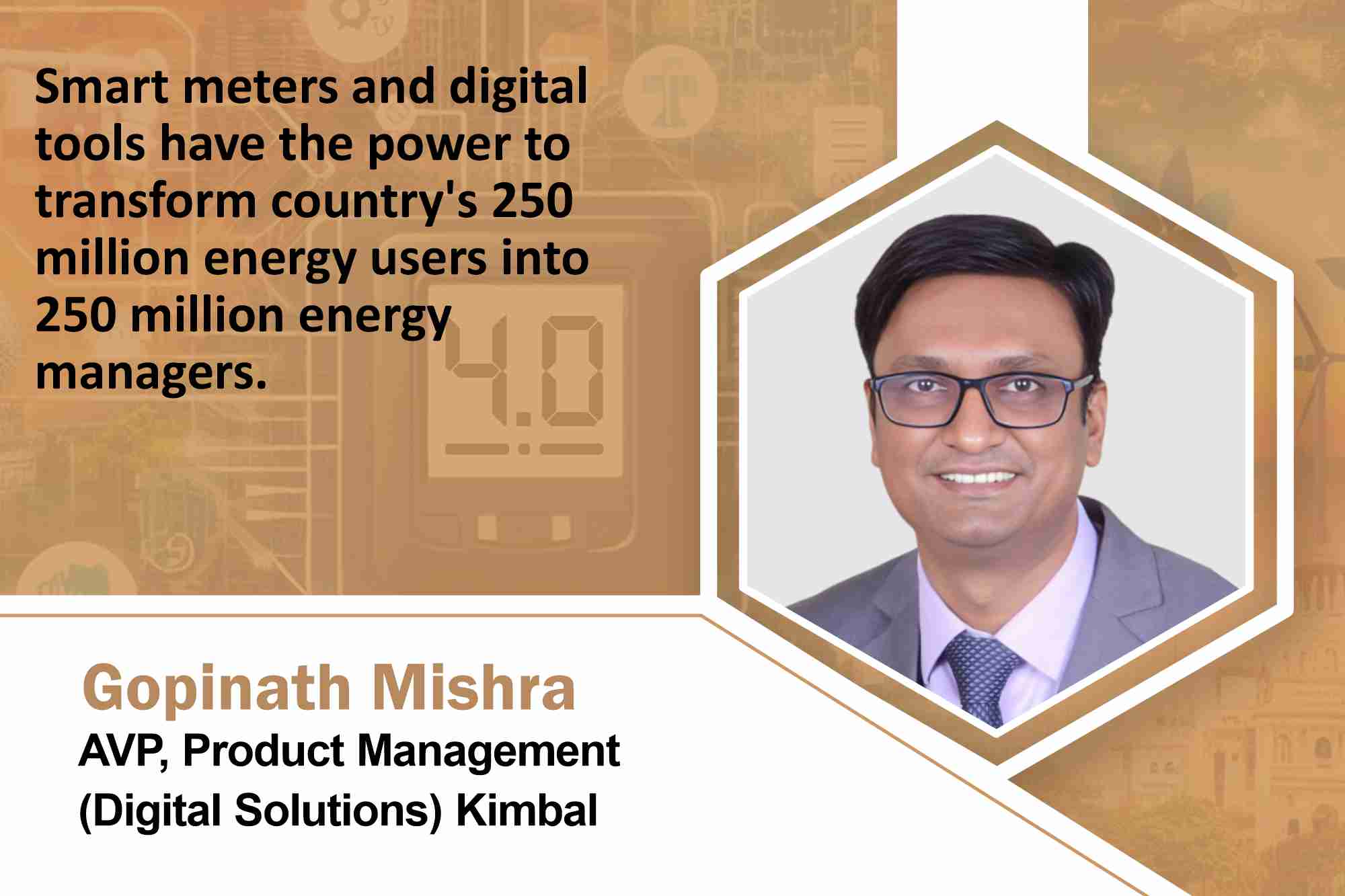Smart meters are a two-way communication channel between utilities and consumers
By Staff Report June 25, 2025 12:54 pm IST
By Staff Report June 25, 2025 12:54 pm IST

Smart meters facilitate more efficient peak load management, integration of distributed energy resources (DERs) and the deployment of demand response (DR) programmes.
The net-zero goal set by India hinges on sector-wide participation and digital innovation. Central to this shift are the smart meters, which enable energy efficiency and consumer empowerment. With 250 million meters planned under the Revamped Distribution Sector Scheme (RDSS), the nation is building a smarter, greener and more responsive energy ecosystem.
The engine behind the transition
Smart meters serve as intelligent systems that create a two-way communication channel between utilities and consumers. This real-time connectivity enables remote operations, including meter configuration, disconnection, and load monitoring. More importantly, smart meters facilitate more efficient peak load management, integration of distributed energy resources (DERs) and the deployment of demand response (DR) programmes.
With the increased electrification and the rise of variable and uncertain loads such as electric vehicles and rooftop solar, the grid must evolve to become more dynamic and intelligent. Smart meters are central to that evolution. They empower utilities to become service providers and consumers to become ‘prosumers’ in energy generation, consumption and trading.
AMI architecture
At the core of this nationwide metering initiative is the Advanced Metering Infrastructure (AMI), including smart meters, communication networks, head-end systems (HES), and the utility’s backend, which comprises billing systems. SCADA, GIS and outage management systems also serve as the metering initiative. Seamless integration across these components is critical. Yet, ensuring interoperability across multiple OEMs and utility platforms remains a major technical challenge.
Successful AMI deployment requires robust end-to-end integration. From NIC cards inside the meters to gateway devices and network configurations (RF, PLC or cellular), every component must work in harmony. Given the complexity often involving up to 8-9 different system integrations, issues with interoperability, communication reliability, and data synchronisation are among the primary bottlenecks.
Progress and challenges
The goal of replacing 250 million meters by 2025 is lagging, with only 14 percent of the total goal achieved. This is due to technical, institutional and operational barriers. These include slow deployment, telecom and infrastructure issues, procurement and policy roadblocks and consumer resistance. States restrict initial installations to government buildings, leading to network delays and inconsistencies. Additionally, the delayed approvals, rigid contract conditions and inconsistent bid evaluations disrupt execution timelines.Consumer engagement gap
Despite over 30 million smart meters installed, consumer engagement remains limited. Most users still view smart meters as mere billing tools rather than as instruments of empowerment. Only 45 per cent of users in low-literacy regions use utility apps less, mainly due to data latency and poor app design. Real-time consumption data is often delayed, leading to a lack of trust among consumers. Utility apps also lack intuitive dashboards, personalised insights, multilingual support and user-centric interfaces.
There is a need to focus on consumer engagement to harness the potential of smart metering fully. This involves a citizen-centric digital blueprint, including user segmentation, gamified engagement, transparent data policies, real incentives and unified platforms. Platforms should cater to different user groups, offering multilingual interfaces and providing various access formats. Regulatory commissions should also design financial incentives for active participation in smart metering programmes and P2P trading.
Technology as the enabler
Emerging technologies, such as AI and blockchain, can be widely used to redefine the energy landscape. AI-based load disaggregation can enable utilities to analyse energy use down to the appliance level without the need for separate sensors. Predictive analytics can alert consumers to abnormal consumption patterns or potential appliance failures. Blockchain can secure and decentralise P2P energy transactions.
A unified energy interface (UEI) acting as an open API layer can further democratise access by integrating billing, DER and contract data across utilities and platforms. Through such innovation, energy users can transition to energy managers.
Smart meters and digital tools have the power to transform country’s 250 million energy users into 250 million energy managers. However, this will not happen solely through technology. It requires a convergence of policy, platforms and participation.
We use cookies to personalize your experience. By continuing to visit this website you agree to our Terms & Conditions, Privacy Policy and Cookie Policy.